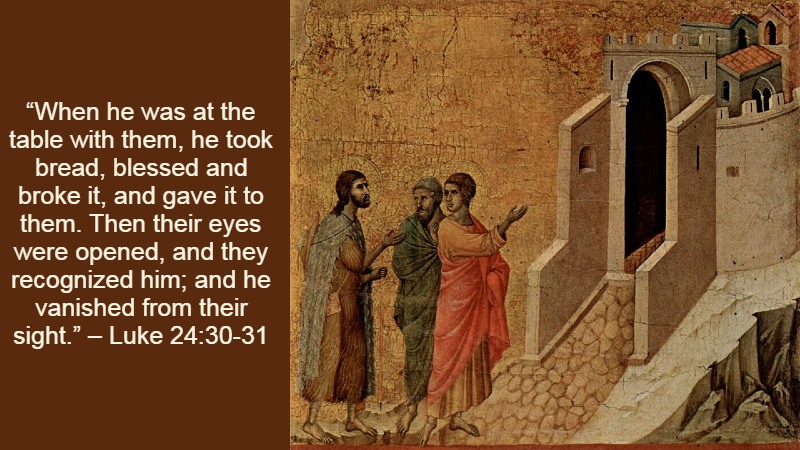
The disciples on the road to Emmaus did not immediately realize that their traveling companion was Jesus. It was only when they invited him and he “broke bread” with them that the disciples finally realized who Jesus was.
Since that Emmaus meal, the early church gathered in homes where Christ was honored and obeyed as the Head of the household. “House churches” did not only worship and pray but also shared resources and were places of service and launching stations for God’s mission.
When Christianity became the state religion in the time of Emperor Constantine, the house church model gave way to bigger worship sanctuaries. However, amid the pomp and majesty of Christendom’s cathedrals, corruption and spiritual malaise set in, and the fervor and devotion to Christ in homes waned.
In the midst of these troubled times, the monastic movement emerged. Men and women with a deep hunger and thirst for God went out into the desert as Jesus did and devoted themselves to prayer and fasting. Some did it alone. Some did it with others. They became known as the Desert Fathers and Mothers.
Out of this spiritual renewal, a movement emerged communities of faith who lived together to pursue a life of prayer, study, service, fellowship, and obedience to God. The places they lived in were called monasteries, and those who lived in them were called monks.
Most of them were men, although women also had monasteries. Life in these monasteries followed a rhythm of prayer, worship, work, mealtime, and rest. They were also places of hospitality, where the stranger was welcomed with respect and care as if they were Jesus themselves.
Monasteries were like households made up of different personalities, and no one was perfect, but each one in this household made a commitment to love, obey and serve Christ with a vow of voluntary celibacy.
People visited these women and men of God to ask for prayer and seek wisdom and healing. In many instances, the power of God was evident in their lives and teachings.
It was also from the healing practices and caring for the sick pioneered by monasteries that modern-day hospitals emerged. During war, famine, and plagues, these monasteries were places of refuge and comfort to those who were desperate and hopeless.
Years ago, I came across a book titled “Domestic Monastery.” The author encouraged the readers of his book to consider households of faith like a domestic monastery where Christ is loved, obeyed, and honored in all that goes on inside the home.
The author used some of the principles of life in an actual monastery to inspire Christians who are married or single, with children or no children, or living as an extended family; to strive to stay in their “cell” that is to remain true to God’s call for them as a parent, a spouse, a sibling, relative or friend.
In a way, if you are committed to growing closer to God, your home, your workplace is a domestic monastery, a place where God is present. God is there, too, if you work in the hospitals, restaurants, or anywhere outside your home. You only need to pause, pray and perceive that God is right there in your midst.
In our work, our rest, and in our mealtimes, we have the opportunity to draw closer to God and be nourished not just by the food but by the presence of Christ, who is the bread of life.
This month of May, as we celebrate our Mothers and continue through the season of Easter, may we grow in our commitment to recognize and honor Christ in our homes through regular times of prayer, study, work, service, and rest. In doing so, may we experience the power of Christ to heal, renew and restore.
May we be households of prayer and loving devotion to God and extend this love and care even to the strangers in our midst. In so doing, by God’s grace, we may be blessed to recognize Jesus in the strangers that we welcome in His name.
God’s blessings to you and your households! Happy Mother’s Day to all Mothers!
Yours in Christ’s love,
Pastor Carla
PHOTO CREDIT: By Duccio di Buoninsegna – The Yorck Project (2002) 10.000 Meisterwerke der Malerei (DVD-ROM), distributed by DIRECTMEDIA Publishing GmbH. ISBN: 3936122202., Public Domain, https://commons.wikimedia.org/w/index.php?curid=3799693
Leave a Reply